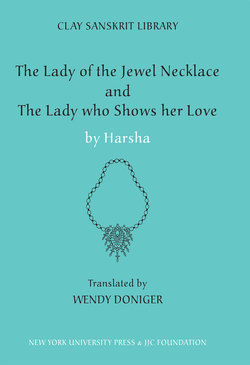Читать книгу The Lady of the Jewel Necklace & The Lady who Shows her Love - Harsha - Страница 48
На сайте Литреса книга снята с продажи.
ОглавлениеAnd that is just the first articulation. Levi goes on and on, through the secondary articulation of the action, and the third, fourth, fifth, and final articulations, all of them citing examples from ‘The Lady of the Jewel Necklace’ and, sometimes, ‘Shakuntala.’
To my mind, ‘Shakuntala’ is not nearly as interesting a play as either ‘The Lady of the Jewel Necklace’ or ‘The Lady who Shows her Love,’ but it became far more famous in Europe, from the nineteenth century on, in part because Goethe went mad for it (Figueira 1991) and in part because it suited European tastes in the age of Romanticism. (As I have argued above, I believe that for us, in the post-Pirandello age, Harsha is a much better fit.) ‘The Lady of the Jewel Necklace’ is quite well known in India. Yet, because the two Harsha plays were not appreciated outside of India, they were not translated so early, so often, or so well as ‘Shakuntala,’ and because they’re not easily available, they’re not appreciated. This is an all-too-familiar vicious circle that the present volume hopes to break open.
The Harsha plays were not translated at all until 1858, while Sir William Jones translated ‘Shakuntala’ in 1789 and several authors soon after translated it into several European languages (Figueira 1991). Even now English translations of Harsha are not easily available to non-specialists, while ‘Shakuntala’ is re-translated constantly, almost as often as the ‘Bhagavad Gita’ (Bhagavad/gita). There is one important exception to the general dismissal of Harsha by the English-speaking world, and that is the case of Michael Madhusudan Dutt (1824–1873), who produced the very first English ________
